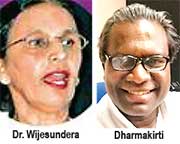
Environmentalists join forces to protect Wilpattu
By Harischandra Gunaratna
Environmentalists are calling for action against a powerful Cabinet Minister from the Vanni electoral District for going ahead with what they call unlawful settlements in the forest reserves in and around Wilpattu in defiance of President Maithripala Sirisena’s orders.
Dineth Mallikarachchi, leading environmentalist, addressing journalists at a news conference organised by the National Joint Committee at the National Library Services at Colombo-07 on Tuesday (April 4) to protect the country’s forest cover and fauna and flora rapacious ministers.
Mallikar-achchi flayed Minister Rishad Bathiudeen and National Unity Alliance leader and former Colombo Deputy Mayor Azad Sally for making false statements that the government was planning to evict those who were already settled. “They are working with selfish and vested interests and their bogus claims would only lead to racial tensions,” he said.
Medical Specialist Dr.(Mrs) Anula Wijesundera hailed President Maithripala Sirisena for having issued a gazette notification amalgamating five forests surrounding Wilpattu national park thereby prohibiting settlements therein.
Forest reserves so amalgamated under the special gazette notification and declared as Mavillu forest reserve are Mavillu, Weppal, Kaaradikkuli, Marichchikadi and Wilattikulam.
Dr Wijesundera said there were around 4,000 families illegally settled in the forest reserve.
Economist and environmentalist Chris Dharmakirti said the new settlements in the area were all politically motivated ones with majority being IDPs. Those acts by politicians would destroy the whole eco system making the country uninhabitable.
Otara Gunawardena, a key member of the National Joint Committee said due to the environmental imbalance the country faced a crisis situation with water resouces drying up.
Source – 05/04/2017, The Island, See more at – http://www.island.lk/index.php?page_cat=article-details&page=article-details&code_title=163178
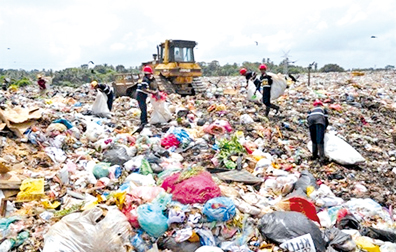
Rathgama, Rajagiriya residents protest over mounting garbage
Residents of Donald Obeysekera Mawatha in Rajagiriya charge that garbage is being dumped in their area.
The residents claim that individuals who do not reside on Donald Obeysekera Mawatha are now dumping their garbage in the area.
Voice of the residents:
“Every day garbage is dumped here. After that a tractor comes here and they load the garbage. Mosquitoes are breeding here. People should be more considerate”.
“There is no point in talking about this. We must tell this to those who are dumping garbage. Nothing gets done just because we talk about it”.
“Nobody understands that it is the environment that is being polluted. This is a nuisance for those living in this neighborhood. Nothing gets done. There is no point talking about it”.
Meanwhile, residents of Monrovia Watte in Rathgama staged a protest claiming they were affected by the garbage recycling plant operating in the area.
The protest took place at the Ranapanadeniya junction along the Galle-Dodangoda road, today, April 03.
Southern Provincial Councillor Ariyawansa Shammu and former UNP member of the Hikkaduwa Pradeshiya Sabha Buddhi Vitharana arrived at the scene of the protest.
A heated argument took place thereafter.
The image used is for representational purposes only.
Source – 03/04/2017, news first, see more at – http://newsfirst.lk/english/2017/04/rathgama-rajagiriya-residents-protest-mounting-garbage/165130
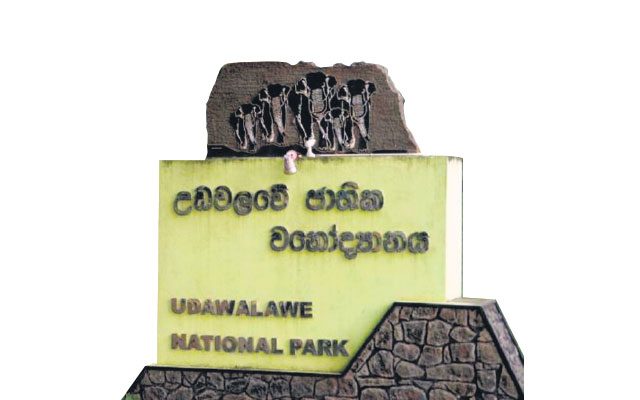
Foreigners made locals
An audit of the ticket collections of the Udawalawe National Park on March 16, 17 and 18 has revealed a fraud running in to l akhs of rupees. The audit was carried out on a tip receved from the public. According to the Ministry of Sustainable Development and Wildlife this may be just the tip of a massive iceberg.
Following the discovery of the fraud in ticketing at the Udawalawe National Park, the government has commenced an investigation into the functioning of all wildlife sanctuaries in the country, Including ticket collections.
According to Director General of the Department of Wildlife Conservation, W.S.K. Pathirathne, the fraud had taken place at the ticketing counter where tickets sold to foreigners had been noted in the books maintained as tickets sold to locals.
The rates of tickets for a foreigners is US $ 15 (Rs. 2250/-) and for a local is Rs. 60/- Meanwhile, Media Secretary – Ministry of Sustainable Development and Wildlife, Pabasari Waleboda said that a separate committee had been appointed in this regard following an order by Minister of Sustainable Development and Wildlife, Gamini Jayawickrama Perera.
Waleboda noted that the case had since been forwarded to the Criminal Investigation Department and other relevant intelligence units for further investigations.
“Although this fraud is discovered as having been committed over three days, we assume that the entire fraud may be more, in the range of over rupees one million. These are public funds that have been defrauded. This is a major issue and therefore other national parks are also being investigated,” she explained.
Source – 01/04/2017, nation, See more at -http://nation.lk/online/2017/04/01/foreigners-made-locals.html
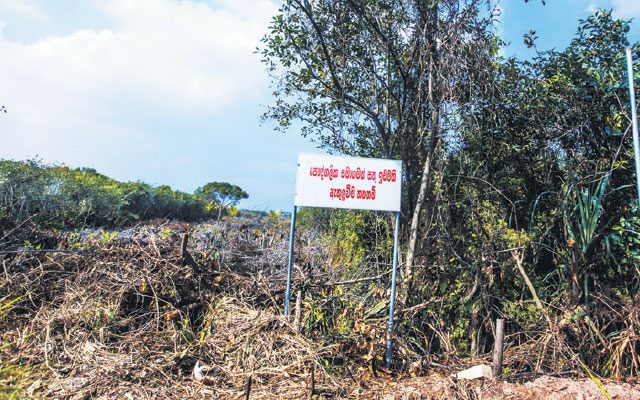
Ja-Ela land grab : Mafia carries on regardless
The Muthurajawela land grab mafia has recently targeted the illicit filling of 240 acres of low lying mangrove lands at Malwatte, Ja-Ela, within the reserve area.
It is also reported that this land grab is a part of the major illicit filling of the Muthurajawela low lying area against which a presidential directive was issued earlier.
According to sources, the recent targeting of the 240 acres of land is also by the same group operating under the protection of a powerful politician.
During an inspection tour by our sister paper Rivira on Friday (31) of the affected areas, the most frequent questions asked by the inhabitants was how the miscreants blatantly disregarded a presidential order and carried on illicit filling that was both an environmental violation and enhance the flood threat to the neighboring areas.
The people welcomed the initiative of President Maithripala Sirisena and Chairman of the Sri Lanka Land Reclamationa and Development Authority, Asela Iddawela for initiating action against the persons concerned and implored that the Presidential order will be carried out to the letter with the law taking action against the wrongdoers.
Pic by Chamila Karuanarathne
Source – 01/04/2017, Nation , see more at- http://nation.lk/online/2017/04/01/ja-ela-land-grab-mafia-carries-on-regardless.html
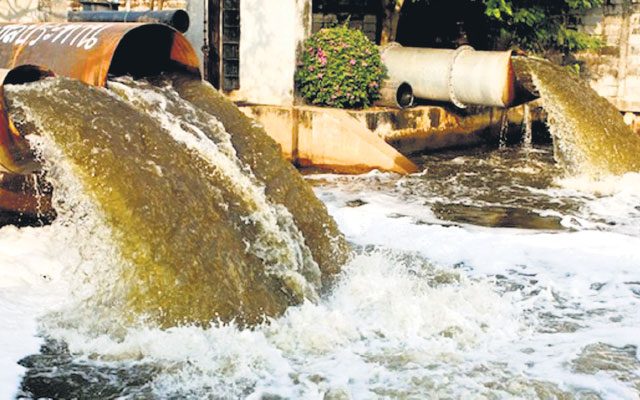
MANAGING WASTEWATER
This year’s theme of the World Water Day focuses on wastewater. This article highlights the urgent need for effective management of wastewater, given the severity of the problem and the catastrophic outcomes it could result in, if not handled wisely.
Water can easily become ‘wastewater’ due to many reasons – mostly tied to human activity. The most common sources of wastewater include domestic effluent consisting ‘black water’ (excreta, urine and fecal sludge) and ‘grey water’ (kitchen and bathing wastewater), effluents from commercial establishments (e.g., restaurants and hotels) and other working places including hospitals, storm water and urban run-off and effluent from industrial, agricultural, horticultural and aquaculture sources.
Effluents from industrial and agricultural sources and from hospitals are considered water pollution; comprehensive pollution control measures that go beyond mere disposal of wastewater are necessary to handle the problem of water pollution. On the other hand, managing wastewater from domestic and commercial sources and urban run-off is largely a matter of proper disposal. However, given the scale and frequency of wastewater generated from these sources, especially in urban areas where population and economic activities are concentrated, ‘proper disposal’ requires comprehensive solutions based on scientific management. This article focusses on domestic, commercial and urban run-off wastewater which has received limited attention by many.
Wastewater is an uncomfortable and unpleasant subject that many prefer to avoid. However, it cannot be easily ignored as everyone is faced with the problem of wastewater on daily basis, whether at home, work place or during the everyday commute. Developed countries have invested large amounts of resources to manage wastewater, giving it high priority and treating the issue as a matter of social welfare. In fact, the level of priority and resources allocated for solving the issue of wastewater reflect a fundamental difference in attitudes towards social welfare between developed and developing societies. In many developing countries, even educated and wealthy members of society seem to be intent on turning a blind eye to the harsh reality and prefer to stay in their own comfort zones, rather than actively seeking solutions to the issue. The usual inclination is to dispose the waste from one’s own premises without giving much thought to the health and environmental repercussions of their actions. In this sense, the wastewater problem is remarkably similar to the garbage problem. Some people carry domestic garbage bags in vehicles and covertly dump it at isolated places. The same motive is visible when a suburban household surreptitiously empties its wastewater pits to storm water drains during heavy showers. Such behavior is motivated by the lack of public collection and sanitary disposal systems, a situation prevalent in many developing countries.
Common methods for disposal of wastewater
There are two basic wastewater management strategies. They are onsite (non-sewered) disposal and off-site (sewered) disposal with or without centralized treatment facilities. In urban areas, off-site disposal of wastewater and disposal of surface run-off are closely connected. Therefore, in some countries, combined systems that convey run-off water with foul sewage in the same pipes can be found. However, many countries have resorted to systems that carry surface run-off and foul sewage separately. Off-site disposal systems are more effective and are in place worldwide. Modern cities in developed countries have established extensive systems for wastewater collection and disposal with centralized treatment facilities. Like other public infrastructure facilities such as transport, urban parks, water and electricity supply, these wastewater management facilities also play a major role in making these cities more habitable, contributing to high living standards enjoyed by citizens.
However, establishing such off-site disposal facilities are costly operations. They need high capital investments for establishment and large operational budgets for running and maintenance. Users are charged for these services by utility companies that operate on volumetric basis. Large utility companies are usually run as public-private partnerships under close supervision of city administrations. In developing countries, city administrators have limited means to invest in modern wastewater management systems and low-income city dwellers cannot be expected bear the full cost of services they offer. As a result, many developing countries are unable to afford such systems. Hence, modern wastewater treatment facilities are restricted to limited areas of large urban centers in the developing world. When available, these systems are usually located in service opulent neighborhoods and a large majority of the population suffers due to lack of proper wastewater disposal facilities. These underprivileged areas are usually left with onsite disposal systems in various forms of operational arrangements. Usually such systems are less hygienic, and chaotic situations arise during disasters such as urban floods. Furthermore, poor storm water and drainage systems and ill-designed onsite disposal facilities themselves contribute to hazardous events such as flash floods very often.
Wastewater management in Sri Lanka
The current wastewater management systems in place in Sri Lanka are abysmal. Being a developing country, Sri Lanka is also plagued with inefficiencies in wastewater management mentioned above. Sewer connections are only available for restricted areas in the Colombo city and for a few other major cities. Inherited from the colonial period, some sections of these systems are dilapidated and are in dire need of renovations and upgrades. Extension work on the pipe system is moving at a snail’s pace and the existing systems do not have centralized treatment facilities. Wastewater collected from the Colombo sewerage system is dumped in to the sea in two locations. Many other fast-developing coastal towns follow this lead, making them leading contributors to marine pollution.
Beyond the limited area covered by pipe connected facilities, outskirts of city areas and surrounding suburbs mostly have to depend on onsite wastewater disposal methods. The common practices include individual facilities of septic tanks or open-bottom soakage pits for black water and open bottom wastewater pits for grey water. However, very often, grey water is channeled illegally to storm water drains directly or indirectly. In underserved areas of Colombo and other cities, residents often have no choice but to share common toilet pits and dispose kitchen and bath water to storm water drains, creating uninhabitable conditions in the surrounding environments.
Coupled with ill-designed storm water drains and run-off water disposal facilities, non-standard waste water disposal methods are the reason that Colombo and other major cities in the island are plunged into chaos during flash floods.
Overall, poor investment on standard public wastewater disposal facilities has led many residents in urban areas to depend on individual onsite wastewater disposal facilities. The quality of these facilities varies greatly. Moreover, this causes accumulation of wastewater in large quantities in local neighborhoods, affecting the groundwater. In some suburban areas, residents are still dependent on shallow groundwater wells for domestic water supply and they get affected from groundwater polluted by accumulated wastewater. Considering this situation, some technical standards have been imposed in building approval criteria regarding locating septic tanks and wastewater pits when constructing houses. However, the effectiveness of such measures, monitoring of those standards and level of compliance cannot be guaranteed.
Wastewater challenge
Sri Lanka boasts of the prevalence of sanitation facilities even among poorer communities, when compared with many other developing countries. However, the management of wastewater is an exception, and remains a challenge. It is a public health and environmental hazard that cannot be left for residents to resolve on their own. Serious health and environmental issues demand public solutions where individuals have to play their roles considering their own and community welfare. Individuals cannot make large public investments required for establishing standard facilities and the government and city administrations need to give due priority to initiate such facilities. However, effective systems need resources for establishment of facilities and efficient operation that cannot be borne by cash strapped city administrations alone. Beneficiaries of the facilities also have to bear some burden here. This requires innovations in technical as well as management and institutional aspects of wastewater management solutions in the country.
Source -01/04/2017,nation, See more at – http://nation.lk/online/2017/04/01/managing-wastewater.html
Garbage polluting Maussakele Reservoir
BY Niranjala Ariyawansha
Environmental organizations claim that the Maussakele Reservoir, which supplies water to main hydropower stations in the upcountry, is polluted by the dumping of solid waste, which does not perish. This, they say, is severely affecting the surrounding environment and the fish in the reservoir.
According to the Ceylon Electricity Board (CEB), the Maussakele Reservoir supplies water to the New Laxapana and Canyon Hydro Power Stations.
Environmentalists emphasize that water from the Maussakele Reservoir, is being supplied through the Maskeliya Oya and daily, a large amount of garbage is being thrown into this reservoir. They said that on rainy days, garbage from the Maskeliya city is also dumped into the reservoir.
Since there is no rain these days, the water level in the reservoir has dropped and the garbage that has been deposited on the bottom of the reservoir can be clearly seen, according to environmentalists.
Responding to a Ceylon Today, inquiry, Deputy General Manager of the Laxapana Power Plant Complex, Anura Herath said that, this has become a huge problem.
“Actually it is the people who should basically be aware of this situation. As a result of this dumping of waste, drinking water gets polluted. Garbage from residents in the vicinity of the reservoir, as well as from the Maskeliya city is disposed of into the Maussakele Reservoir. During the Sri Pada season, people also travel on this road. Then, a large number of non-perishable items, such as empty water bottles and other waste are collected. As the CEB, even though we remove this waste, we do not have adequate staff. People should know, not to cause harm to public property in this manner,” Herath said.
He added that under these circumstances, in collaboration with the Divisional Secretary, a programme to raise awareness among the public, is required.
Under the Laxapana Power Stations Complex, which belongs to the National Power Grid, Laxapana, New Laxapana, Wimalasurendra, Canyon and Polpitiya hydropower plants are situated around and in the vicinity of the Maussakele Reservoir.
Source – 01/04/2017, Ceylon Today , See more at – http://www.ceylontoday.lk/print20170101CT20170331.php?id=18296
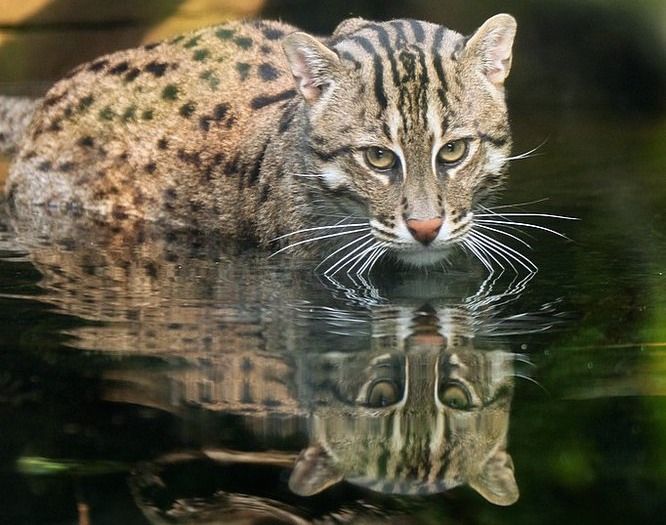
Wildlife men responsible for wildcat’s death?
By Risidra Mendis
Environmentalists have criticized Department of Wildlife Conservation (DWLC) officers after they failed to save the life of a fishing cat after it was captured by villagers in Divulapitiya, Gampaha.
An official at the Gampaha DWLC office told Ceylon Today that villagers had captured the adult male fishing cat with a noose on 25 March 2017.
“When the animal got restless and began struggling, the villagers called the DWLC for help. But by the time we got to Divulapitiya, the cat was in a bad condition.Wildlife officers tried to remove the noose from the animal’s neck and release it. But the villagers protested and told us not to release the animal in this area. When we were trying to catch the cat and put it in a cage to be taken away, the noose tightened and the animal died,” the DWLC officer said.
He added that one of the wildlife officers was also bitten by the fishing cat while trying to catch it. The animal’s head was sent to the Medical Research Institute to check for rabies.
Asked why they took orders from the villagers a DWLC officer said they didn’t want to create an unpleasant situation since the media was also present and decided to capture the animal and take it away.
“We cannot find out who caught the fishing cat because the villagers are not giving us any information. However we have told them that catching a fishing cat is against the Fauna and Flora Protection Ordinance (FFPO),” the DWLC officer explained.
“The fishing cat is strictly protected under Section 30 sub section 2 of the FFPO and it is an offence to kill, injure or take an animal into captivity,” environment lawyer Jagath Gunewardena said.
Commenting on the inexperienced DWLC officers, Zoologist Dilan Peiris said it is very clear in the video that the DWLC officers were responsible for the death of the fishing cat. “They should have first cleared the crowds that were watching and shouting and traumatizing the animal. They should know how to catch a wild animal in an emergency situation without causing too much stress to the animal. If they had the proper training to capture a wild animal this fishing cat would be alive today. The Wildlife Training Centre in Giritale does not provide the required training for these DWLC officers,” Peiris said.
He added that a veterinary surgeon should have been present to capture this animal. But DWLC officers insist that they don’t have enough vets to be sent in emergency situations. Why is it that vets don’t like to join the Wildlife Department? These are questions that need to be addressed by Wildlife and Sustainable Development Minister Gamini Jayawickrama Perera, because it is the responsibility of the Department of Wildlife Conservation (DWLC) to help and protect all animals in the country,” Peiris explained.
source – 02/04/2017, Ceylon Today, See more at – http://www.ceylontoday.lk/print20170101CT20170331.php?id=18415

Move to protect forests adjoining Wilpattu triggers diverse reactions
Locals protest moves to declare more than 40,000 hectares as conserved forest area.
Environmental groups have welcomed the declaration made on March 24 under the Forest Conservation Ordinance to protect more than 40,000 hectares, but locals are demanding that the presidential extraordinary gazette notice be revoked.
Secretary to the President, P. B. Abeykoon on Friday met with some of the stakeholders including the Forest Conservator General, officials from the Wildlife and Mahaweli Development Ministry, the District Secretaries of Mannar and Vauniya as well as representatives of the Muslim community including Minister Rishad Bathiudeen, former Municipal Council member Asath Sally, Colombo District lawmaker Mujibur Rahuman and President of the Muslim Council N.M. Ameen. Members of the Civil Societies Coalition for Internally Displaced Persons, which is opposed to the decision, also joined the discussion.
Abeykoon said their concerns would be brought to the notice of President Maithripala Sirisena who issued the declaration.
Under the notice, 40,0030.525 hectares of forest area belonging to Mavillu, Weppal, Karadikkuli/Marichchakatti, Wilaththikulam and Periyamurippu were declared as the Mavillu Conservation Forest from March 21, 2017.
Muslim Council president N. M. Ameen told the Sunday Times that they requested that the four notifications be revoked and that the lands from Weppal, Marichchikatti and Wilaththikulam be released to the people. He said that before new forest reserves are demarcated, the Government should have discussions with the people.
Mujibur Rahuman said he told the president’s secretary that the Mavillu conservation area had been demarcated without discussing the matter with ministers and the community.
He explained that many of the Muslims living in the area had been displaced due to terrorist activities. He said that privately-owned land had also been included under the gazette notice.
“We requested that the implementation of the gazette notice be put on hold while the boundaries of the Wilpattu National Park are determined,” he said.
Mohamad Ali Khan, a resident of Marichchakatti, who was among a group of protestors, said many families have lived there for over two decades and they should be allowed to continue to do so.
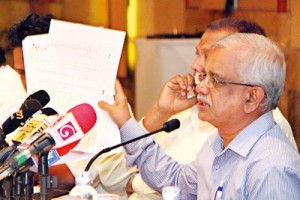
Minister Rishad Bathiudeen in a statement said that the declaration was affecting the internally displaced people. He said the gazette notice must be revoked as it is impacting the resettlement process.
He said he will present a Cabinet paper seeking the revocation of the notice.
Government Agent of Mannar, M Y S D Deshapriya said he was not aware of the notice and declined comment.
Meanwhile, the president’s media secretary, Dharmasiri Ekanayake, said the declaration will stand as it does not affect villages.
He said that the declaration was issued as a matter of urgency because environmental groups and forest and wildlife officials were pushing for it.
“They expressed concerns that there will be further encroachment of forest areas,” he said.
Director of Environment Conservation Trust, Sajeewa Chamikara, said that they called for the protection of the areas adjacent to the Wilpattu National Park.

Source – 02 /04/2017, The Sunday Times, See more at – http://www.sundaytimes.lk/170402/news/move-to-protect-forests-adjoining-wilpattu-triggers-diverse-reactions-235019.html
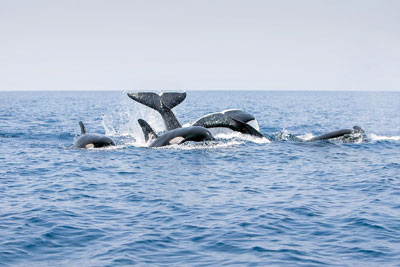
Super pods of sperm whales put on marine spectacle
The eight-strong orca pod get ready to charge towards the sperm whales. Pix courtessy Andrew Sutton.
While observing a super pod of nearly 100 sperm whales, marine mammal expert Ranil Nanayakkara witnessed a rare occasion when killer whales attacked the marine giants in the seas off Kalpitiya. It was an epic battle.
Sri Lanka is famous for wildlife spectacles such as this along with the largest gathering of Asian elephants, huge pods of blue whales and rare sightings of leopards.
One spectacle in the making is super pods of sperm whales (physeter microcephalus). The sperm while is the largest ‘toothed whale’ which can dive to depths of 3,200 feet in search of its favourite food – the giant squid. Female sperm whales and their calves live in pods of 15-20 members, while males tend to roam alone in cooler waters closer to polar regions. A super pod of whales is formed when such smaller pods gather for feeding, socialising or mating. March to April seems to be the time such super pods form and in 2012 the largest such gathering consisting of over 100 individuals was recorded.
Marine biologist Ranil Nanayakkara who has studied the sperm whale super pods from 2010, left Kalpitiya shores on March 23 to scan the ocean specially for sperm whales. It turned out to be their lucky day when they witnessed the sperm whale super pod about 15 nautical miles from Kalpitiya at 9.15 am after travelling for about one hour. “There were over 150 sperm whales on the ocean of around one kilometre. The super pod we saw consisted of 50 to 60 individuals,’’ Nanayakkara said.
Together with Ranil, British author Philip Hoare and photographer Andrew Sutton were on the boat and it was a show of a life time. The larger sperm whale males had joined the super pod and they witnessed love making on a massive scale. The team witnessed foreplay — rubbing against each other, tail slapping, spy hopping, rolling over. Even researchers could see the animals’ aroused genitals and as they watched, a pair swam belly to belly under the boat.
The sperm whale is also famous for making sounds. It makes the loudest sounds of any animal and also emits morse-like “codas” used to communicate long distances. The sea is full of sound as well and Nanayakkara was listening to these codas using special ear phones.
The ocean was like an opera, said Nanayakkara.
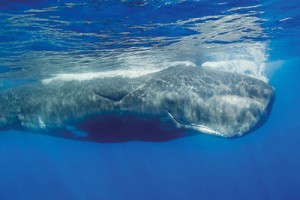
They observed a large male deviate from the super pod and swim rapidly northward. “When a sperm whale swims fast, its large head stays out of the water – so we could clearly say it was in a great hurry. Then several other large males started following the first one. Seeing several large male sperm whales moving northward we thought it could be an aggression related to mating, so we followed them,” Nanayakkara explained.
After travelling two or three kilometres, the team found the large males with a pod of about 10 females with younger whales. The males packed their bodies tightly and it was like several logs stacked tightly. The men in the boat also saw something else. One person in the boat alerted the others to a dolphin but to their surprise it was the unmistakable dorsal fin of an orca. The sperm whales had rushed to protect the pod that came under attack by the orcas.
The black and white orca (orcinus orca), is a mid-sized toothed whale. it is the largest member of the dolphin family and became a popular after being featured in the movie ‘Free Willy’. But the orca is not an innocent animal as it is an agile predator in the ocean also known as the ‘killer whale’.
“It was a pod of about eight orcas attacking a weaker maternity pod. The large males would have heard the distress call and had rushed to protect them. The males packed their bodies side by side tightly guarding the weaker whales from the predatory orcas,” Nanayakkara said. The water around the smaller pod was cloudy with orangish whale poop – a defense mechanism used by the distressed whales to conceal themselves from the predators.
Killer whale attacks on other whales have been reported on a handful of occasions previously. Working as a team, they usually challenge the weaker female or a calf to hunt it down. According to Nanayakkara, the orcas found in our waters is transient and they are born hunters.
“We had also observed an amazing communal defense mechanism used by the sperm whales where the males encircle the weaker females and young putting their bodies in front of the attacking killer whales,” Nanayakkara said. This is a known as the “marguerite formation”, named after the shape of the flower by that name. In this formation, the heavy and powerful tail of an adult whale is pointed outward, readying to deliver lethal blows to any incoming attacker.
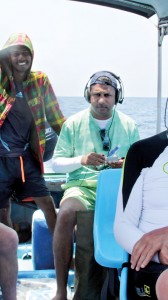
The researchers also experienced a somewhat scary experience. Since the marguerite formation was not effective, the whales started using the boat as a cover to avoid the orcas. They moved to the other side of the boat when the orcas charged and a collision could have been dangerous.
This ‘battle of the titans’ dragged on for more than an hour. The sperm whales finally made the orcas give up. Nanayakkara said there were about 20 killer whales at that time and it could also be the largest orca pod seen in Sri Lankan waters.
Nanayakkara said it was one of the amazing moments he had witnessed in his whole life.
| Know the sperm whaleThe head of the whale contains a liquid wax called spermaceti, from which the whale derives its name. Spermaceti was used in lubricants, oil lamps, and candles. Scientists have yet to understand its function, but believe it may help the animal regulate its buoyancy. Some also believe that the spermaceti has bio-acoustical amplification properties, enabling the whale to produce the loudest sounds of any animal.Mature males average 16 metres (52 ft) in length but some may reach 20.5 metres (67 ft), with the head representing up to one-third of the animal’s length. Capable of plunging to 2,250 metres (7,382 ft), it is the second deepest diving mammal, following only the Cuvier’s beaked whale. The sperm whale’s clicking vocalisation, a form of echolocation and communication, may be as loud as 230 decibels under water. The sperm whale has the largest brain of any animal on Earth, more than five times heavier than a human’s. Sperm whales can live for more than 60 years according to sources on the Web.Ambergris, a waste product from its digestive system, is still used as a fixative in perfumes. |
Source – 02/04/2017,The Sunday Times, See more at – http://www.sundaytimes.lk/170402/news/super-pods-of-sperm-whales-put-on-marine-spectacle-234975.html
CEA permits mini-hydro projects sans EIA: RPSL
An alliance of environmentalists are protesting against the Central Environmental Authority’s (CEA) continued issuance of permits to mini-hydro plants across waterfalls, streams and rivers in the wet zone, despite, what they allege, are several ecological and social issues. The CEA has “ignored all pleas by villagers and environmental groups, and are still issuing new permits, as seen by their recent approval to construct another private mini-hydro plant across Athwelthota waterfall,” states the Rainforest Protectors of Sri Lanka (RPSL).
These projects are carried out by a handful of private companies with the sole aim of generating maximum profit. “The current process does not involve any Environmental Impact Assessment (EIA) by an independent organisation, with public comments,” the association says. “Instead, the developers themselves submit an Initial Environment Examination (IEE) report which is biased and full of false information.”
Such reports are habitually approved by the CEA without field investigations, during or after construction. Approximately 1,000 km of streams and rivers have already dried out, resulting in many villagers and farmers suffering due to lack of water. “Many rare and endemic freshwater fish are heading towards extinction, and the country is losing valuable income due to impact on eco-tourism,” the RPSL warns. “Any development process should not be an ignorant one, but a conscious one with a focus on sustainability. Therefore, the national energy policy of Sri Lanka should be centred on ecologically sustainable energy, which would protect the water rights of the people and continuation of aquatic ecosystems.”
The RPLS reveals that, “Forest land adjoining the Koskulana River, forming the northern boundary of the Sinharaja World Heritage Rainforest, has been cleared of all vegetation, for the construction of a mini-hydro project, in clear violation of the State Land Ordinance.”
“At Anda Dola in the Galle District, a weir and 2.5 km section of concrete headrace channel are both constructed within the Dellawa Forest Reserve. Construction activities within a protected forest reserve are a violation of the Forest Ordinance of 1907, and punishable by law. The IEE report produced by the developer for the Anda Dola mini-hydro has failed to include many endemic species that inhabit the stream and surrounding forest.”
A report prepared by the Wildlife Conservation Society of Galle and submitted to the CEA, points out that, “Environmental and biodiversity information, including species of fauna, in many pages of the developer’s IEE are incorrect and misses many species.
“Findings of widespread violations indicate systemic failure of the entire process in place for the assessment of mini-hydro projects,” the RPLS states. “It is, in effect, a breach of trust in the very institutions that gate-keep approvals, and fully justifies the public’s scepticism in them.”
Source – 02/04/2017, The Sunday Times, See more at – http://www.sundaytimes.lk/170402/news/cea-permits-mini-hydro-projects-sans-eia-rpsl-235068.html











